Being left-handed is not a big deal; in fact, it can bring many advantages.
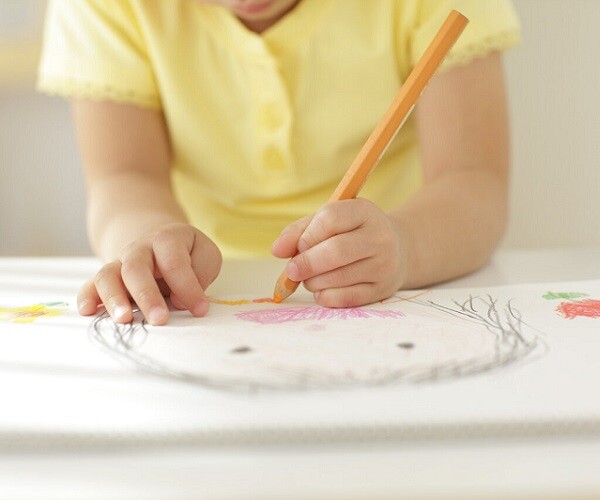

Study: Being Left-Handed is Natural, Don’t Force Children to Change
Many people hold the belief that children who write and eat with their left hand are “violating the rules” and should be made to switch to using their right hand.
However, the reality is that which hand a child favors is primarily determined by brain development. Research shows that left-handed children tend to be more creative and independent in their thinking. They tend to develop problem-solving skills in unique ways, thanks to the way their brain works.
Accordingly, the left hand is controlled by the right brain, and the right hand is controlled by the left brain.
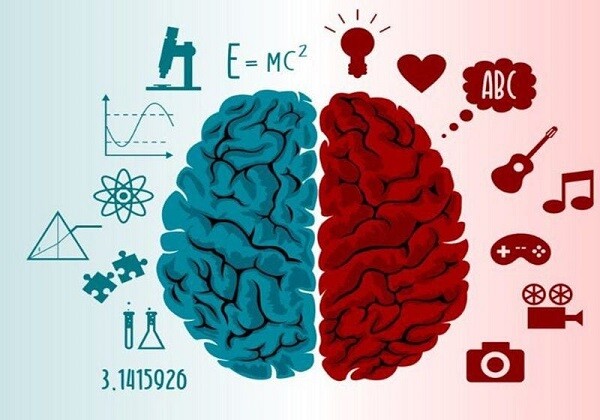
Left-handed children have a more developed right brain.
If a child favors their left hand, it means their right brain is more developed. Therefore, don’t force them to use their right hand. Instead, encourage them to use both hands simultaneously, allowing both sides of their brain to develop together.
Research data shows that the left and right brains in humans develop in different directions. Activities for right-handed people actually promote the development of the left brain, which is responsible for understanding text, language, and mathematical concepts.
Left-handed activities, on the other hand, promote the development of the right brain, which governs complex emotions and imagination, such as spatial orientation, musical pitch, and artistic ideas.
Additionally, about 10% of the population is left-handed, and many famous people like Einstein, Leonardo da Vinci, and Bill Gates are left-handed. So, being left-handed is not a big deal. In fact, it can be a “gift”!

What Are the Unique Advantages of Being Left-Handed?
Quick Thinking and Strong Creativity
As mentioned earlier, left-handed children tend to have a more developed right brain, leading to potential talents in art, music, design, and more.
Many famous painters and musicians like Picasso and Mozart were left-handed. So, if your child loves drawing, building things, and storytelling, don’t be surprised—it’s a “superpower” often associated with left-handed people.
Faster Reaction Times and Better Athletic Performance
Left-handed people also have an advantage in sports, especially competitive sports like table tennis, tennis, and boxing. Since most people are used to playing against right-handed opponents, facing a left-handed player can throw them off their game.
Famous left-handed athletes like Lin Dan (badminton champion) and Nadal (tennis legend) often confuse their right-handed competitors.
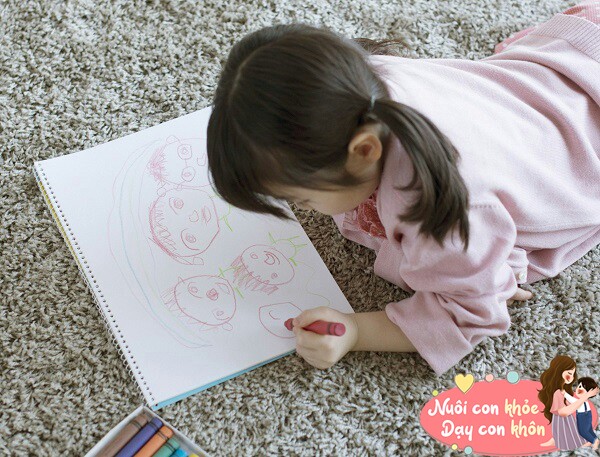
Left-handed children tend to be more artistic and musical.
Of course, left-handed children live in a world designed mostly for right-handed people, so they may encounter some minor inconveniences, such as:
– Tools like scissors and computer mice may be designed for right-handed people and feel awkward to use.
– Ink may smudge easily when writing (especially with fountain pens).
– They might “fight” with right-handed people during meals (just sit on their left!)
However, there are solutions to these issues. Parents can help left-handed children choose tools that are more comfortable for them to use.

How Can Parents Promote Balanced Brain Development in Their Children?
A child’s brain is rapidly developing, so parents should assess the dominance of the left and right brains based on their child’s hand preference.
With the different divisions of labor between the left and right brains, understanding their strengths and providing appropriate training and stimulation is key.
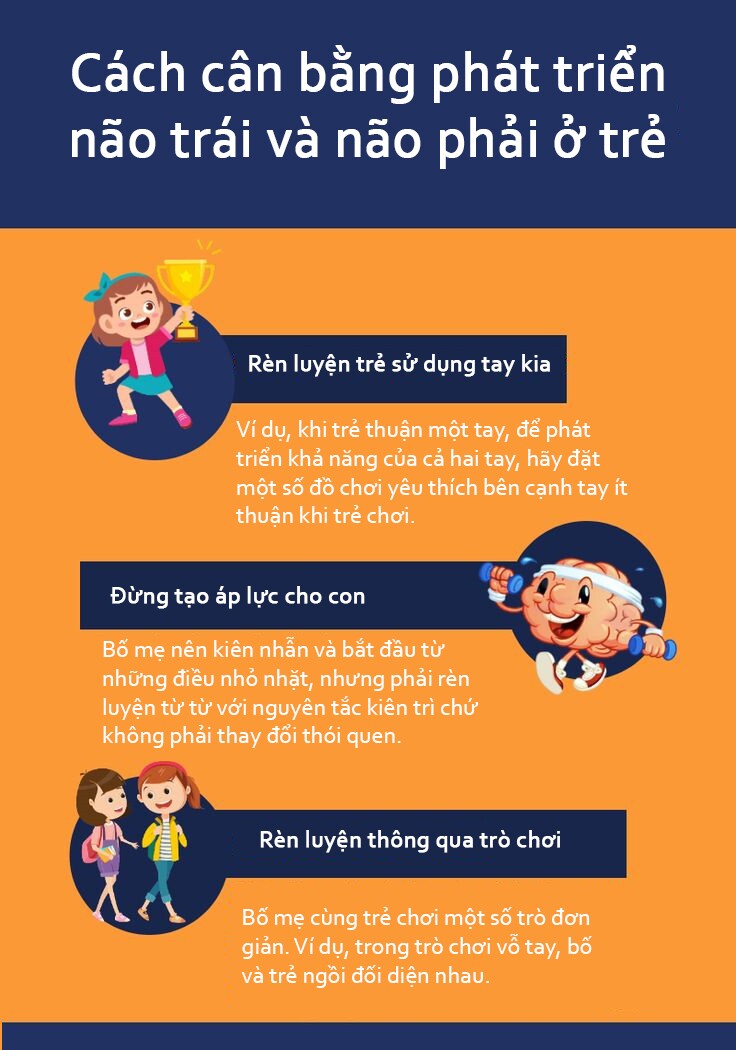
Image source: Pinterest.
Train Your Child to Use Their Other Hand
To train your child to use their other hand, don’t force them. Instead, incorporate it into their daily life.
For example, if your child favors one hand, place some of their favorite toys on their less dominant side when they play. This will encourage them to unconsciously use their other hand to reach for the toys, gradually forming a new habit.
Don’t Pressure Your Child
Parents should be patient and start with small things in daily life, but the training should be consistent rather than trying to change habits.
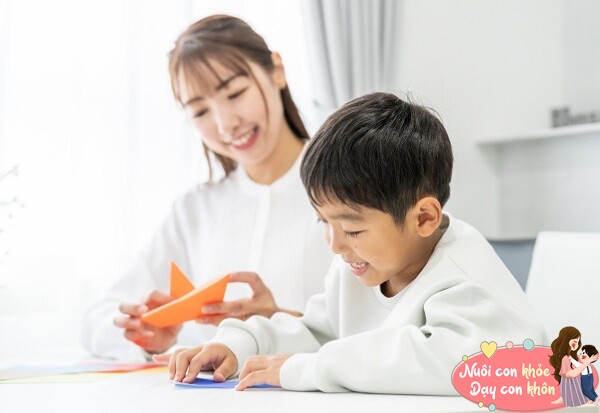
Parents should encourage their children to use both hands.
Use Games to Train Both Hands
Play simple games with your child. For example, in a clapping game, sit facing your child. When you extend your right hand, ask your child to extend their right hand, and clap your hands together. Then, when you extend your left hand, they should do the same, clapping left hands together. Start slowly and then increase the speed.
Children around three years old are in a phase where they use both hands. For those who favor their left hand, don’t force them to switch immediately. Let it happen naturally. At the same time, don’t neglect training their right hand.
Training both hands simultaneously can promote the development of both brain hemispheres, and the child will become more dexterous with both hands.
The Ultimate Guide to Number Coloring: 20 Enchanting Pictures to Captivate and Inspire Young Artists
Immerse yourself in a captivating world of art with our animal-themed paint-by-number kits. These adorable and familiar creatures will spark your child’s creativity, offering a relaxing and enjoyable experience. The charming illustrations are designed to captivate young artists, providing a fun and educational journey into the wonderful world of painting.






































